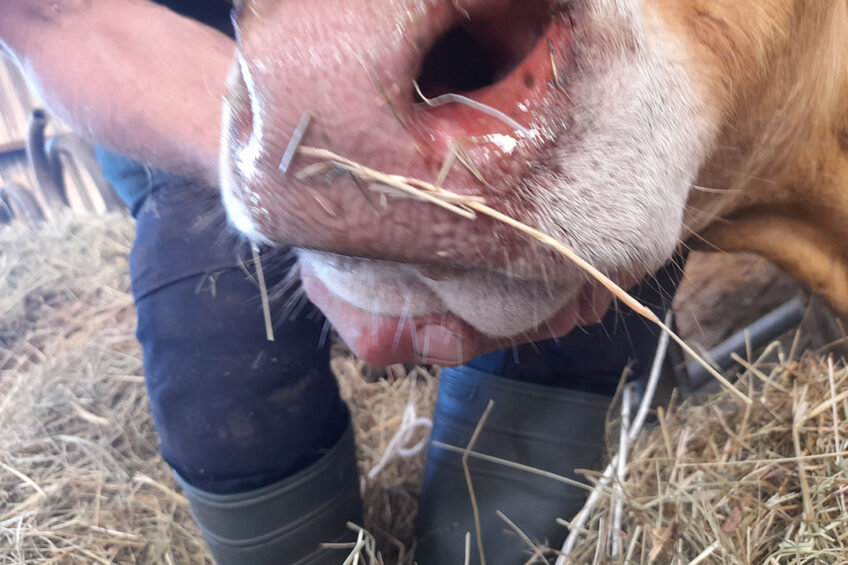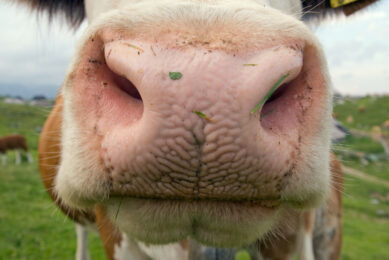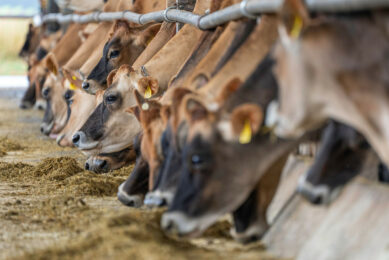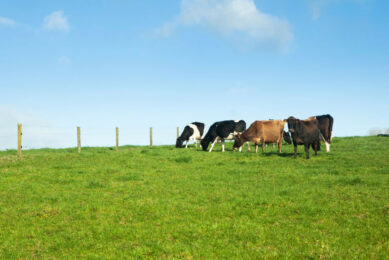Bluetongue virus outbreak in Netherlands spreading like wildfire

The Bluetongue virus is spreading like wildfire among livestock in the Netherlands for the first time in 14 years, killing sheep and sickening cattle. Hopes for a vaccine are high but manufacturers must act swiftly as new cases keep coming. A hidden question upon the unveiling of the vaccine is whether the government will implement a mandatory or voluntary vaccination strategy.
Bluetongue virus, which is endemic in tropical and subtropical regions, is transmitted by biting insects called midges. It does not infect humans, but the new outbreak is worrisome because Dutch livestock have been stricken by a potent strain for which no vaccine is currently available in Europe.
The Dutch Food and Consumer Product Safety Authority (NVWA) has received reports of the virus at more than 1,100 livestock farms (sheep and cattle combined) in the country, with NOS reporting that 965 cases have been confirmed. This rate of spread appears to be faster than the one reported during the 2006–08 outbreak.
The NVWA received the first reports of the virus early this September from 4 sheep farms in the provinces of North Holland and Utrecht. Within 2 weeks of its first detection in the country, the virus had been confirmed in 18 flocks of sheep and 55 cattle herds. Veterinarians sent blood samples to Wageningen Bioveterinary Research, where Melle Holwerda (head of vector-borne and zoonotic viral diseases) and colleagues confirmed the presence of the bluetongue virus.
They identified the virus type to be BTV-3. Symptoms of BTV-3 appear more severe than BTV-8, which caused the previous epidemic in northern Europe. The NVWA map shows Bluetongue has now spread over 8 provinces. The minister of agriculture, nature and food quality, Piet Adema, already expects the country’s sheep population to be much smaller by next year.
Economic impact
Reports show that the disease affects all ruminants and camelids (cattle, sheep, goats, deer, llamas and alpacas) and has the greatest production impact on dairy cattle due to the drop in milk yield. Direct costs include production losses, animal deaths, and veterinary treatment. Indirect costs include surveillance, additional measures for animal export, disease control (preventive vaccination and treatment with insecticides), vector monitoring, and administration. There is no treatment and severely suffering animals must be euthanised.
The previous outbreak in 2007 involved a milder strain of the virus, which spread across tens of thousands of European farms and cost an estimated €175 million in the Netherlands alone, much of it from curtailed trade.
Control measures
The Dutch agriculture ministry has advised farmers to keep animals indoors, with enough ventilation to blow off midges. Farmers are advised to bring animals indoors before sunset, as midges become active around that time. Of course, there is no medicine for sick animals; however, some reports highlight that veterinarians can prescribe anti-inflammatories, but, although this treatment is supportive, it’s often not very effective. It is also important to ensure that fresh drinking water and feed are within reach for animals that are less mobile.
Live vaccine in South Africa
In South Africa, where BTV-3 is endemic, veterinarians use a vaccine containing a live, weakened form of the virus. Although the safety of a South African vaccine is currently being investigated, its adoption is unlikely, as this vaccine is not allowed in the European Union because of concerns that the virus in the vaccine will recombine with circulating variants, increasing their virulence.
The NOS reports that the vaccine against bluetongue that has been provisionally authorised in South Africa is not authorised in the Netherlands, which writes outgoing minister Adema to the House of Representatives. The Veterinary Medicines Agency advised the minister against allowing it because of safety risks and doubts about the efficacy of the vaccine, on which hopes were initially pinned.
Vaccine development
On the other hand, Melle Holwerda advised that research needs to begin quickly on a vaccine based on inactivated virus. Adema reportedly told the Dutch parliament that pharmaceutical companies are working on developing a vaccine, but it is still unclear when that will be available. During the last epidemic, a vaccine for BTV-8 was created in about a year and helped the Netherlands and other countries get rid of the virus. “Hopefully in May we can have the first animals vaccinated,” Holwerda said.
Elsewhere, reports show that EU member nations and the UK have imposed livestock trade restrictions to limit the disease’s spread. Officials in the UK, which has been free of bluetongue since 2010, are worried infected midges will blow across the North Sea from the Netherlands. They are monitoring winds and modelling potential “plumes” of midges. Meanwhile, Bluetongue has also appeared in Belgium.
Farmers are also advised to be on the lookout for clinical symptoms. Clinical signs on cattle include ocular discharge, conjunctivitis, oral mucosal congestion, development of ulcers and necrotic lesions on the lips and tongue as well as oedema.
Voluntary or mandatory vaccination?
The analysis of beliefs shows that for a communication intervention, the communication channels used need to be credible and trusted by farmers. In their study published in the journal of Food Policy, researchers from Wageningen University and Research analysed the policy instruments used by the Dutch government in their 2008 Bluetongue vaccination strategy.
They found that most European member states opted for a mandatory vaccination scheme, whereas the Netherlands, amongst a few others, opted for a voluntary approach. To stimulate voluntary participation by farmers, 2 types of policy instruments were deployed. A communicative intervention was implemented in which the Ministry as well as farmer organisations conveyed written or oral recommendations to motivate farmers intrinsically to vaccinate their cattle. Subsidisation of vaccination costs as an extrinsic motivator was another policy instrument put in place. Together with the standard prevention and control measures, the voluntary approach in the Netherlands was sufficiently effective in controlling the spread of Bluetongue, from an epidemiological viewpoint.
With the virulence of the current virus type, it remains to be seen whether the Dutch government will implement a mandatory or voluntary vaccination strategy.










